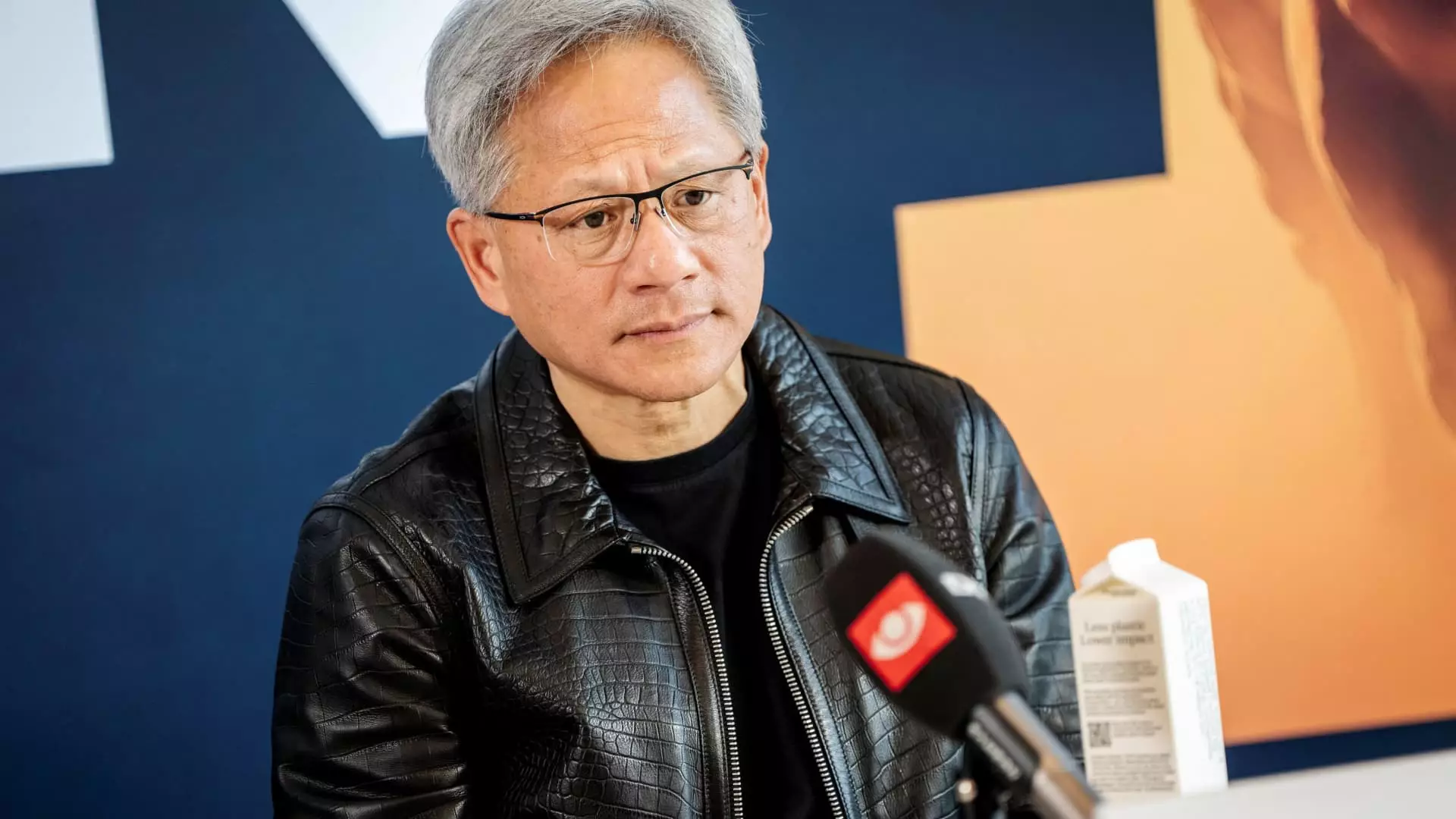In an era where artificial intelligence (AI) is redefining industries, Nvidia has remarkably cemented its position as the leading provider of AI-specific chips, maintaining an impressive 80% market share. This dominance in the domain of graphics processing units (GPUs) underscores Nvidia’s pivotal role in supporting both the development and deployment of generative AI software. Investors are keenly focused on Nvidia’s impending third-quarter earnings report, scheduled for Wednesday, with significant anticipation regarding whether the company can sustain its vigorous growth trajectory. Since the onset of AI’s boom two years ago, Nvidia has navigated a landscape filled with escalating competition, making its achievements even more noteworthy.
According to HSBC analyst Frank Lee, Nvidia finds itself in “uncharted territory,” attempting to enhance its valuation within a staggering $3.5 trillion market cap. With this massive valuation comes immense pressure to maintain momentum. Investors are particularly interested in concrete evidence of growth as Nvidia faces the natural ebb and flow that characterizes a maturing market. Lee’s projection suggests not just the possibility of continued growth, but also a belief in an upward trajectory through to 2026, especially in the data center space. His optimistic stance is fortified by ongoing demand for Nvidia’s innovative products.
A crucial driver of Nvidia’s future growth is its Blackwell chip, the next iteration in its series of powerful processors which has only recently begun shipping to prominent tech giants including Microsoft, Google, and OpenAI. The ongoing reception and demand for these chips are among the most critical aspects that Nvidia’s CEO, Jensen Huang, is expected to discuss during the conference. With a reported surge in expected sales—amounting to “several billion” in the upcoming January quarter—the anticipation surrounding Blackwell’s performance is palpable.
However, Nvidia does face potential roadblocks; reports have surfaced about overheating issues concerning some systems utilizing the Blackwell chips. This concern adds a layer of complexity to the excitement surrounding the chip’s rollout, causing investors to reassess possible repercussions for Nvidia’s reputation and performance in the long term. Despite these challenges, analysts remain optimistic, with Raymond James’ Srini Pajjuri estimating that Nvidia could ship approximately 100,000 Blackwell GPUs in the fourth quarter—a figure he considers to be on the conservative side of investor expectations.
The backdrop to these discussions is notable, as Nvidia’s stock has seen an incredible increase since the last earnings report, climbing nearly 19%. This surge comes off the heels of an astonishing eightfold increase since the launch of ChatGPT in late 2022, signaling substantial confidence from investors in Nvidia’s prospects.
As Nvidia gears up for its earnings announcement, expectations suggest revenue could reach around $33.12 billion, reflecting an almost 83% increase year-over-year. Though the company has experienced sales growth of 122% in the most recent quarter, this figure is down from even more explosive growth rates seen earlier in the year. Still, the tech titan’s shift in focus from its traditional gaming business to its rapidly expanding data center revenue highlights a significant transformation within the company. Analysts expect Nvidia’s gaming segment to grow modestly at approximately 6%, with projections of around $3.03 billion in sales, while growth in automotive chips, although small, is forecasted to increase by a robust 38%.
As the tech industry becomes increasingly saturated with competitors vying for a share of the AI chip market, Nvidia’s ability to sustain its premium position will be closely scrutinized. Investors must pay careful attention to the company’s commentary regarding its data center operations, which currently account for about 88% of its sales. The resilience and forward momentum of this segment will be critical in supporting Nvidia’s overall growth strategy. If CEO Huang can provide assurances that growth will continue unabated, Nvidia could solidify its standing as a cornerstone of the AI revolution.
While there are undeniable challenges and competitive pressures in the landscape ahead, Nvidia’s strengths in innovation, established market leadership, and strategic vision provide it with the tools necessary to navigate the evolving market dynamics. The upcoming earnings report will be a pivotal moment for Nvidia—one that could set the tone for its future in the rapidly growing world of artificial intelligence.

